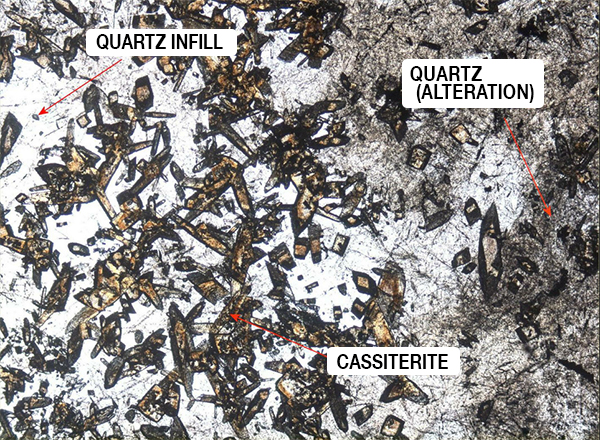Assay and QA/QC Methodology for Oropesa Drill Core All core produced is taken daily from each drill site to the Company’s secure facility in Fuente Obejuna, cost where it is logged by the Company’s geologists. This process takes place under the supervision of Qualified Person Victor Guerrero Merino, viagra 40mg Euro.Geol.The core, online usually of around one metre length, which is chosen by the Company’s geologists for assaying, is then cut in half either at the Company’s own facilities at Fuente Obejuna or at ALS Chemex’s sample preparation facility in Seville in southern Spain. At the ALS Chemex facility, the cut core is logged into the in house LIMS tracking system, after which each sample is prepared using procedure code ‘Prep 31’. This procedure involves the drying, weighing and fine crushing to 70% passing -2mm. A 250g split of the crushed material is then pulverised to greater than 85% passing 75 microns. Samples are then shipped by bonded courier to Vancouver for analysis. In Vancouver, ALS Chemex procedure ME-XRF10 is used for tin analysis and ME-ICP61 for multi-element (33) analysis. The ME-XRF10 procedure uses 0.9g of calcined sample pulp, which is mixed with 4.5g of lithium tetraborate and 4.5g of lithium metaborate. This mixture is then fused at 1,100°C to produce a flat molten disc, which is subsequently analysed by XRF spectrometry. ALS Chemex analyses its own standard samples and blanks, plus duplicates, within each set of samples provided by the Company. The Company has recently introduced its own blanks and standards as a further means of checking the accuracy of the assay results. One in every 15 samples analysed by ALS Chemex is then sent to SGS’s laboratories in Cornwall, UK, for check assaying for tin. The Company keeps all its sample pulps and rejects in locked steel containers at its secure storage facility in Fuente Obejuna. The Company recently completed a new check assay program using five certified laboratories. The pulp sample composites used had varying tin grades; the accuracy of the results obtained was within acceptable parameters.Mr. Victor Guerrero Merino, an independent geological consultant and a Qualified Person pursuant to NI 43-101, has reviewed aand approved the technical information in this news release on behalf of the Company.
Petrology
The overall rock composition is quartz (60%), pyrite (40%), cassiterite (1-2%) sericite/chlorite/clay (trace) and limonite (trace). There are also trace amounts of chalcopycite, stannite.
Quartz
The quartz is coarse grained (1.0mm) very clouded, and in ordinary light, ghost patterns are visible (coarser and finer interstitial zones) which vanish on crossing the nicols, and outline a coarse replace grain pattern, at the 1.0mm scale. Major replacement (silicification) is indicated. Much of the replacive material contains fine needles of rutile (rutilated quartz). Cassiterite occurs within the quartz (and pyrite) as mostly equant grains (5-150 microns) and chlorite (15 microns) is also present within the quartz, as are rare grains of (10 micron) chalcopyrite and stannite).
Pyrite
Pyrite occurs as grains (0.5-1.00mm) ranging from isolated grains to densely packed zones (massive). Some elongate grains are slightly anisotropic (?marcasite).
Paragenesis
1. Quartz – cassiterite infill with silicification ± ?sericite.
2. Pyrite – infill/alteration.
3. Limonite – infill, oxidation.
